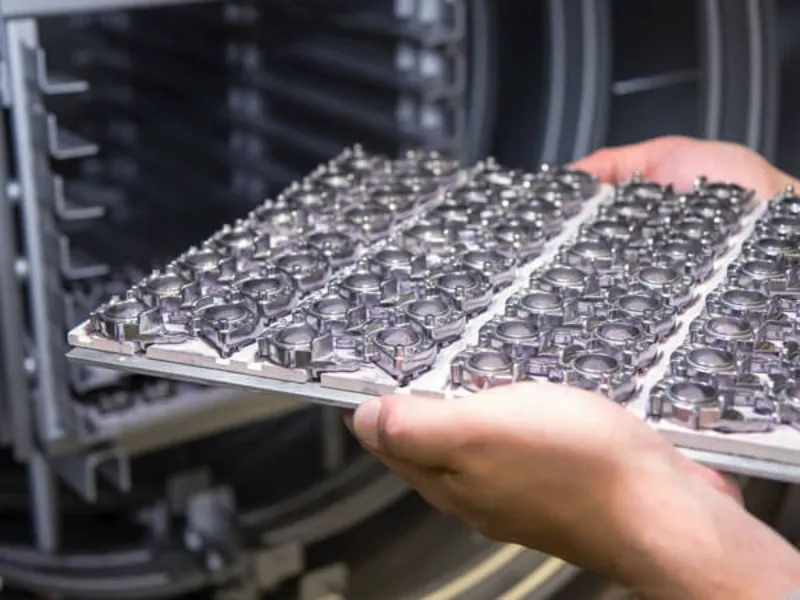A Comprehensive Guide to Metal Injection Molding (MIM) Processing
What are MIM Parts?
Metal Injection Molding (MIM) parts are precision components manufactured using a unique process that combines the flexibility of plastic injection molding with the strength and integrity of metal. This process involves mixing metal powders with a binder material to create a feedstock, which is then injected into a mold to form the desired shape. After molding, the binder is removed, and the parts undergo sintering to achieve the final metal properties. MIM is ideal for producing complex, high-volume parts with tight tolerances.
Advantages of MIM Parts
Design Flexibility: MIM allows for the creation of intricate and complex geometries that would be challenging or impossible to achieve with traditional manufacturing methods. This flexibility enables the production of parts with undercuts, thin walls, and fine details.
Material Variety: A wide range of metal powders can be used in MIM, including stainless steel, titanium, tungsten, and various alloys. This versatility allows for the selection of materials based on specific mechanical and thermal properties.
High Precision: MIM parts can achieve tight tolerances and excellent surface finishes, making them suitable for applications requiring high precision and aesthetic quality.
Cost-Effective: For high-volume production, MIM can be more cost-effective than machining or casting, especially for small, complex parts. The ability to consolidate multiple components into a single MIM part can also reduce assembly costs and improve product reliability.
Easy Material Alternatives of MIM Parts
One of the significant advantages of MIM is the ease of switching between different materials. By changing the metal powder in the feedstock, manufacturers can produce parts with different properties without significant changes to the process or tooling. This flexibility makes MIM an attractive option for industries that require a variety of materials, such as aerospace, medical, and automotive sectors.
Convenient Post-Manufacturing of MIM Parts
MIM parts often require minimal post-manufacturing processes due to their high precision and excellent surface finishes. However, if needed, additional treatments such as heat treatment, plating, or coating can be easily applied to enhance the properties of the parts further. This convenience reduces the overall production time and costs, making MIM a highly efficient manufacturing method.
Micro MIM Parts Size
MIM technology is capable of producing very small parts with high accuracy, often referred to as micro MIM. These parts can be as small as a few millimeters in size, making MIM suitable for applications in the medical and electronics industries where miniaturization is critical. The precision of micro MIM parts ensures reliable performance in demanding applications.
High Tolerance of MIM Parts
MIM parts are known for their high dimensional accuracy and consistency. The process can achieve tolerances as tight as ±0.3% of the dimension, which is comparable to or better than many traditional manufacturing methods. This high tolerance capability is essential for industries such as aerospace and medical devices, where precision is paramount.
Parts Consolidation
One of the key benefits of MIM is the ability to consolidate multiple parts into a single component. This consolidation reduces the need for assembly, minimizes potential weak points, and improves overall product strength and reliability. By integrating multiple functions into one part, MIM can simplify designs and reduce production costs.
Limitations of MIM Parts
High Initial Investment: The initial setup cost for MIM, including tooling and feedstock preparation, can be high. This cost is offset by the efficiency and cost savings in high-volume production but may be a barrier for low-volume or prototype manufacturing.
Size Limitations: While MIM excels at producing small to medium-sized parts, it is not suitable for very large components. The size of MIM parts is typically limited to around 100 grams, although this can vary depending on the material and design.
Material Selection: Although MIM supports a wide range of materials, not all metals can be processed using this method. The metal powders used must be fine and compatible with the binder system, which may limit the selection of certain exotic or highly specialized materials.
Technology Experience
Successful MIM processing requires a deep understanding of both materials science and injection molding techniques. Engineers must have experience with the behavior of different metal powders, binder formulations, and the sintering process to optimize part quality and consistency. Collaboration with experienced MIM providers can help leverage this expertise and ensure the success of MIM projects.
Conclusion
Metal Injection Molding is a powerful manufacturing process that offers numerous advantages for producing high-precision, complex metal parts. With its design flexibility, material versatility, and cost-effectiveness for high-volume production, MIM is an excellent choice for various industries. However, it is essential to consider the limitations and ensure the necessary expertise to maximize the benefits of this advanced technology. Whether you are looking to produce micro-sized components or consolidate multiple parts into one, MIM can provide innovative solutions to meet your manufacturing needs.


Reviews
There are no reviews yet.